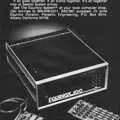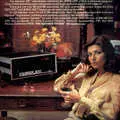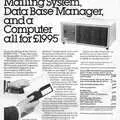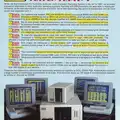
Equinox/Parasitic Advert - November 1977
From Byte - The Small Systems Journal
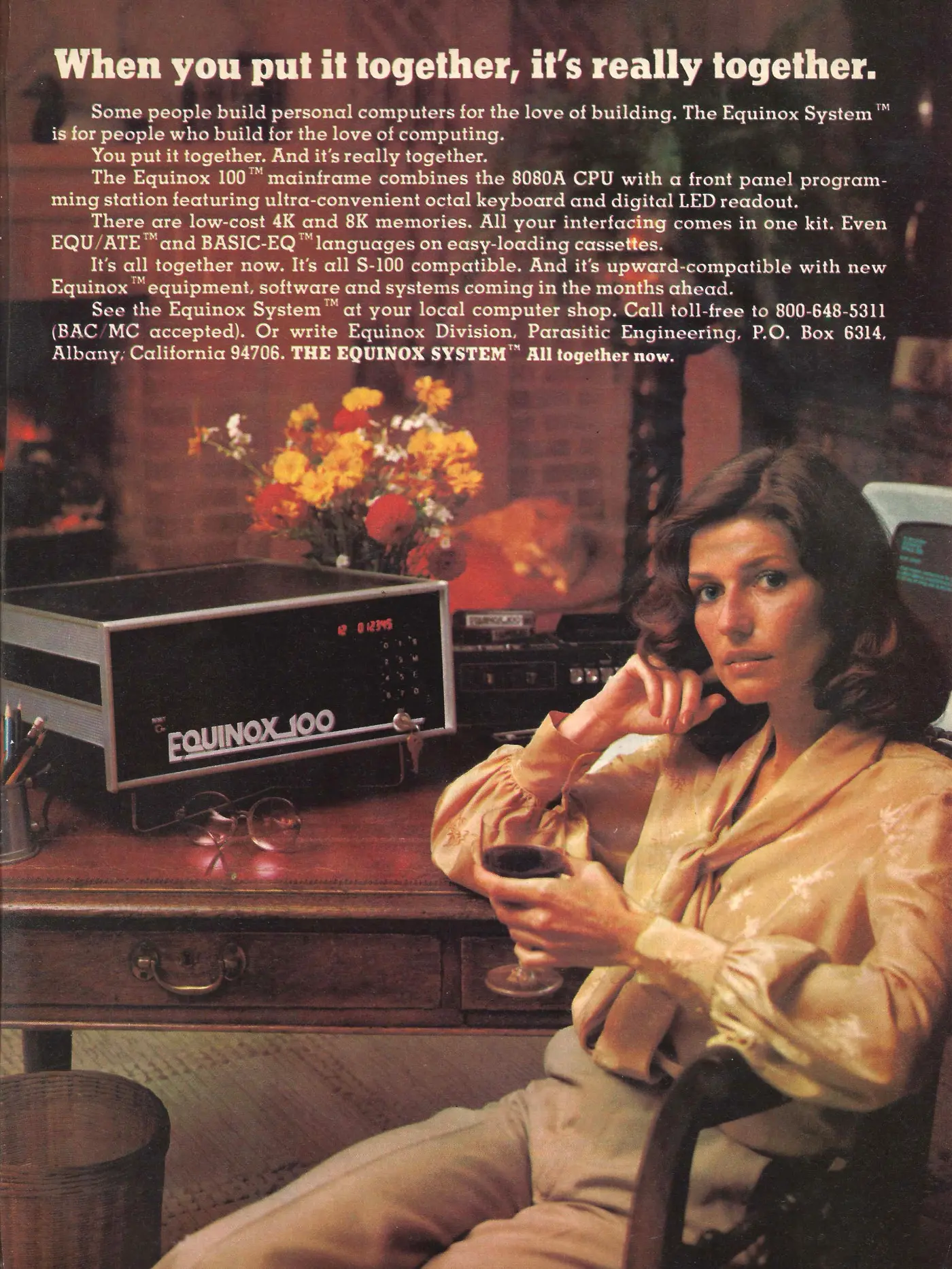
Equinox 100: When you put it together, it's really together
For those moments when the computer's playing up and there's clearly nothing better to do than hit the bottle comes this advert for the Equinox 100, made by Parasitic Engineering of Albany, California.
One of many Intel 8080A-based systems running on an S-100 bus, it offered 4 or 8K memory, an "ultra-convenient octal keyboard and digital LED read-out", and was somewhat optimistically billed as a "mainframe" computer.
Mainframe has come to mean large and expensive computers dedicated to serving hundreds of users or performing intensive calculations, but here it means a frame and a hardware bus.
A bus was essentially a number of identical sockets connected to the CPU, input/output, and memory of the host (or a CPU also plugged into the bus) - where extra add-in cards could be plugged in, powered and held securely.
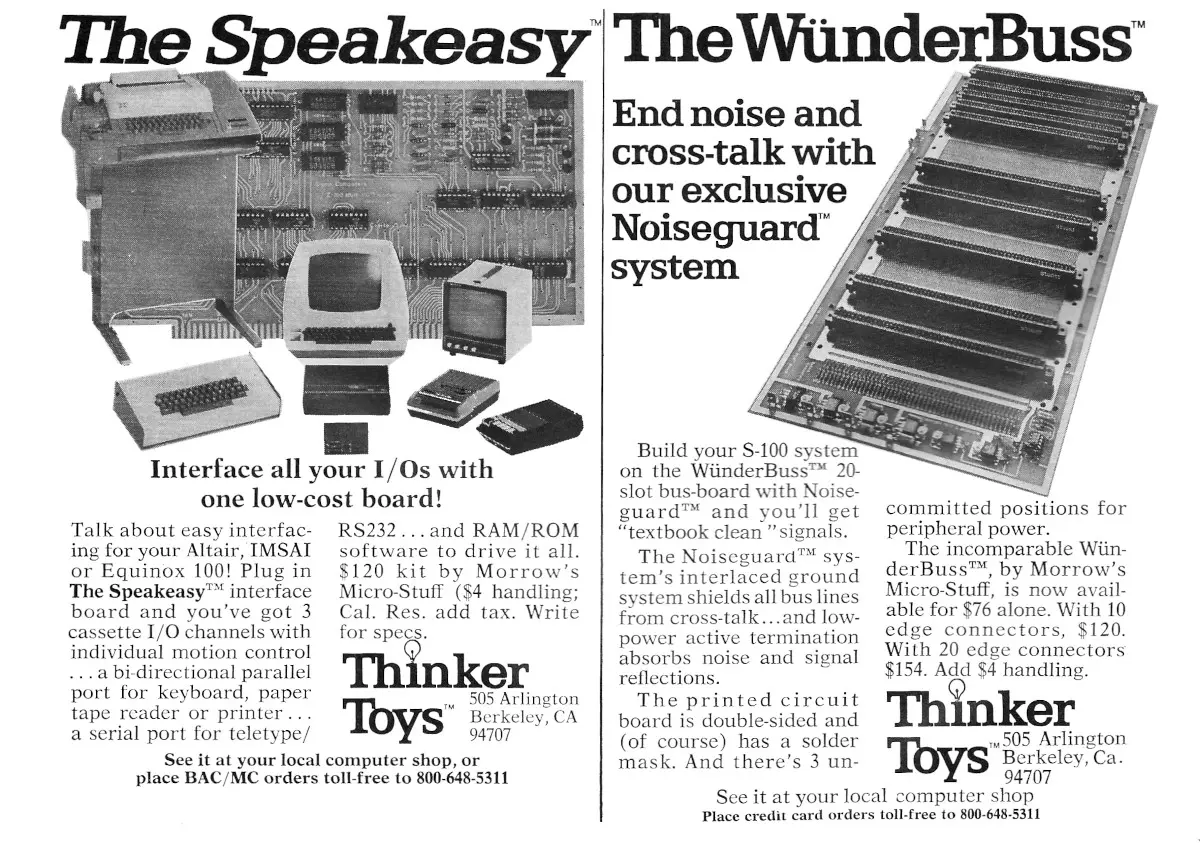
An advert for George Morrow's WünderBuss, from Morrow's Micro-Stuff, and sold via the Thinker Toys brand. From Byte, July 1977
The Equinox's mainframe was based on the WünderBuss, which was designed by well-known electronics engineer George Morrow.
It was a version of the S-100 backplane with improvements to reduce the noise that the original Altair bus seemed to be notorious for.
Morrow's improvements, along with those of Bill Godbout, ended up as part of the formalised IEEE version[1] of S-100 which was ratified in 1983 as IEEE 969-1983.
Unfortunately, this was too late as by now the IBM PC - with its own expansion bus, which would eventually be known as ISA - was well on its way to becoming more-or-less the only standard in town.
Godbout - a key figure in the very early homebrew microcomputer industry - was another manufacturer of cards for S-100 systems. He was also a friend of Gary Kildall, the author of popular 1970s operating system CP/M.
It was said that Godbout was flying with Kildall when the famous call from IBM - which was looking for an operating system for its new 5150 IBM PC - was made to Kildall's home. Digital Research - Kildall's company - would lose out when IBM picked Microsoft instead[2] .
The advert itself is one of several of the era that clearly tried to depict micros in non-threatening, non-technical environments - the complete opposite of, say an archetypal "big room" installation like 1962's Bendix G-20.
As such, it was not unlike those for the Altos ACS8000, which featured silverware and a pot plant, or Pearcom's Pear II, featuring that most computer-like of accessories, an oil lamp.
Date created: 01 October 2013
Last updated: 06 November 2025
Hint: use left and right cursor keys to navigate between adverts.
Sources
Text and otherwise-uncredited photos © nosher.net 2025. Dollar/GBP conversions, where used, assume $1.50 to £1. "Now" prices are calculated dynamically using average RPI per year.
